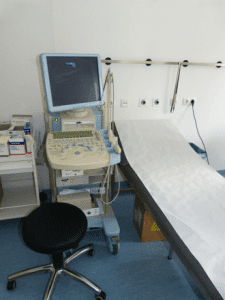Ultrasound scanning makes use of sound waves in order to produce images of the interior of a person’s body, and it is also very commonly used for the examination of babies in pregnant women. What’s more, ultrasound scans are very useful for guiding biopsies and diagnosing specific heart conditions as well as assessing the damage to the heart after a person suffers a heart attack.

The basics of the procedure and how it is performed
A general ultrasound scan or procedure is painless and safe, as confirmed by the private ultrasound professionals from London ultrasound centre Alliance Medical. In ultrasound scanning, a small gadget called a transducer probe is used, and a special kind of gel is applied to the skin’s surface. Then, sound waves with a high frequency are transmitted by the transducer through the special gel straight to the person’s body. The probe will then collect the sounds which are bounced back, and the sound waves are used by the computer to produce images.
An ultrasound scan does not make use of ionising radiation, which is used in standard X-ray procedures, so the patient is not exposed to radiation at all. And since the images in an ultrasound are taken in real time, it can easily show the movement and structure of the internal organs of the body as well as the blood that flows through the vessels.
The purpose of an ultrasound scan
Ultrasound scans are used for a variety of purposes and are mainly beneficial for diagnosing and treating different medical conditions. An ultrasound scan also serves the useful purpose of assessing damage to an organ after an illness.
Physicians can easily evaluate certain symptoms like pain, infection, and swelling with the use of an ultrasound scan, and ultrasound scans can easily examine internal organs that include the heart and its blood vessels (which also include the aorta in the abdomen), the gallbladder, liver, spleen, kidneys, bladder, thyroid glands, pancreas, a woman’s ovaries and uterus, the scrotum in men, an infant’s brain, hips, and spine, and more.
Furthermore, ultrasound scanning is useful for guiding some procedures which are non-invasive, such as biopsies using needles and biopsies for breast cancer, and it is also used for diagnosing heart issues or conditions such as problems with the valves or congestive heart failure. You may know a ‘heart ultrasound’ by its more common name, which is an echocardiogram.
There is also a type of ultrasound called a Doppler ultrasound, which helps evaluate blood clots, narrowed vessels, tumours, the absence of the flow of blood to specific organs, and infections.
Image attributed to Pixabay.com
